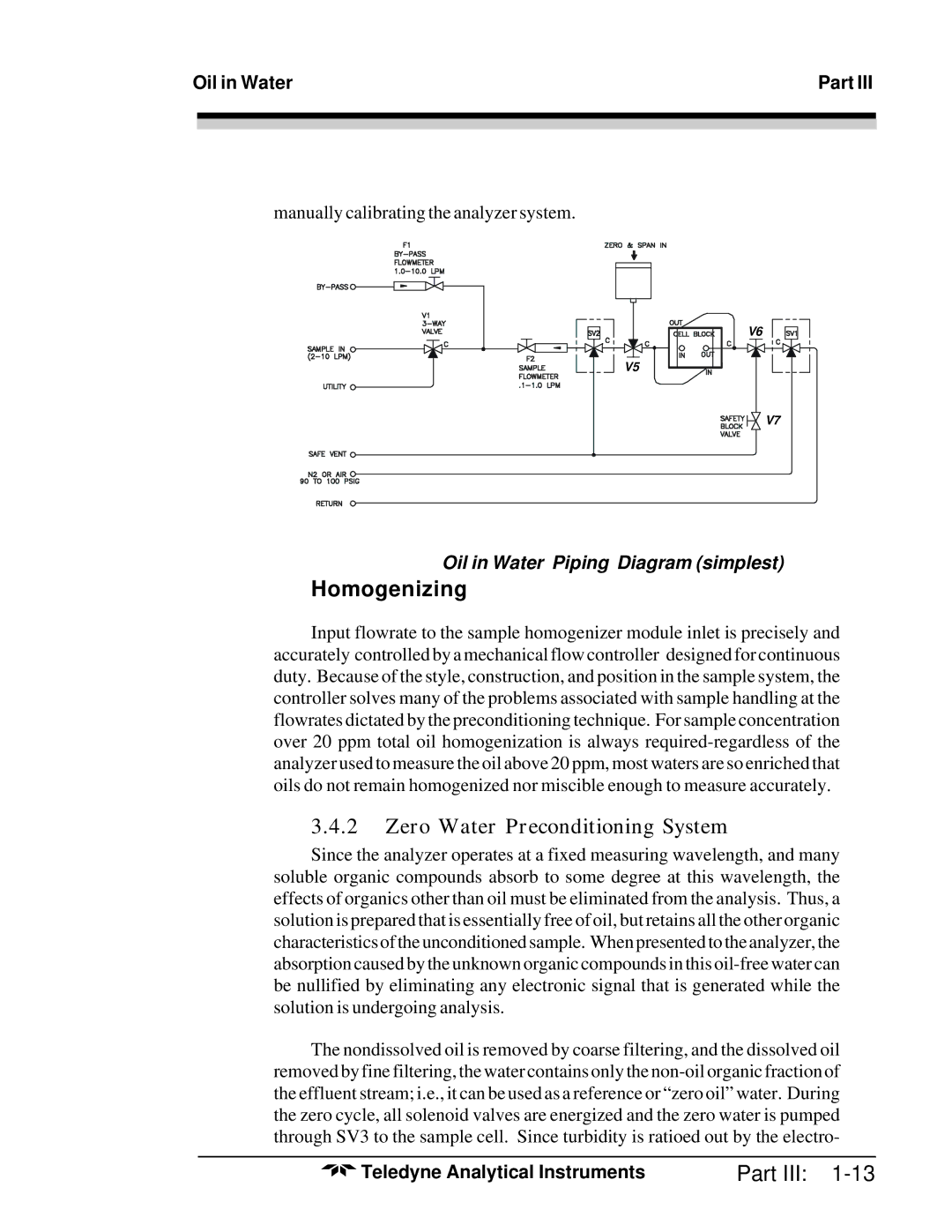
Oil in Water | Part III | |
|
|
|
|
|
|
|
|
|
manually calibrating the analyzer system.
V5
V6
V7
Oil in Water Piping Diagram (simplest)
Homogenizing
Input flowrate to the sample homogenizer module inlet is precisely and accurately controlled by a mechanical flow controller designed for continuous duty. Because of the style, construction, and position in the sample system, the controller solves many of the problems associated with sample handling at the flowrates dictated by the preconditioning technique. For sample concentration over 20 ppm total oil homogenization is always
3.4.2Zero Water Preconditioning System
Since the analyzer operates at a fixed measuring wavelength, and many soluble organic compounds absorb to some degree at this wavelength, the effects of organics other than oil must be eliminated from the analysis. Thus, a solution is prepared that is essentially free of oil, but retains all the other organic characteristics of the unconditioned sample. When presented to the analyzer, the absorption caused by the unknown organic compounds in this
The nondissolved oil is removed by coarse filtering, and the dissolved oil removed by fine filtering, the water contains only the
Teledyne Analytical Instruments | Part III: |
